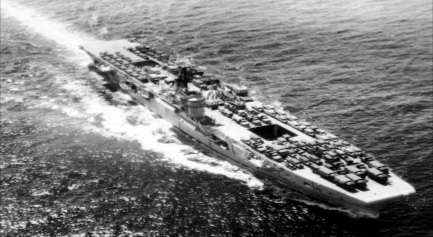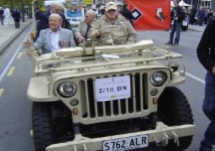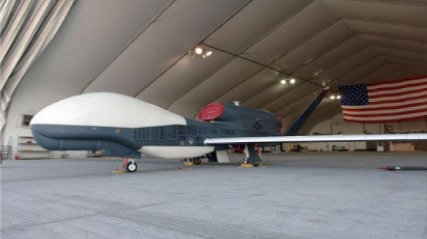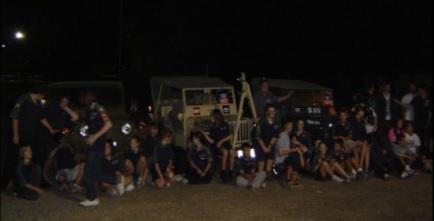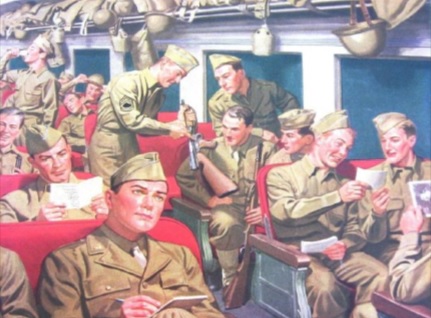An apology and redress is needed to the thousands of young men conscripted into the Australian Army.
Reprinted as written by: BRUCE HAIGHOn November 26 last year Defence Minister Stephen Smith announced a judicial inquiry into cases of abuse within the Australian Defence Force from the 1950’s through to the present day. The single act of introducing conscription, by ballot, of young men into the Australian Army, in the years 1965 to 1972, for military service overseas in a war zone, constitutes one of the graver acts of abuse and bullying of Australian citizens in recent history. The judicial inquiry, should look at the ethics, effect, equity and justice of conscription. It was an abuse of power and of people, and redress and an apology are required to right the wrong that was committed.
Australia twice voted against the introduction of conscription during World War I. Conscripts fought in Papua, in World War II, because it was an Australian Territo- ry; they fought with great distinction on the Kokoda Track, stopping the Japanese just short of Port Moresby and getting abused by the head of the Army, General Thomas Blamey, for their trouble.
Conscription or national service as it was euphemistically called, was introduced in
1965 to provide a pool of trained young men for military service in Vietnam, Aus- tralia had a professional army of volunteers, but after the decision was made to go to war with the United States, concern was expressed within a small a restricted circle of government, that volunteers might not come forward in sufficient numbers to man an expanded army in a commitment of unknown duration and intensity.
The Prime Minister, Robert Menzies, announced the introduction of conscription on November the 10, 1964; the necessary amendments to the Defence Act were made on April 6, 1965. Menzies announced the commitment of 1 RAR, a battalion of reg- ular soldiers, to Vietnam the next day. He gave no indication that he intended to send the first of the conscripts when their training was completed at the end of 1965
In citing the need for a limited ballot to draft 20 year old men into the army for two years, Menzies referred vaguely to the growing communist threat from the north and the need for Australia to be prepared to meet any sudden threat quickly.
There was also a hint that Indonesia might again threaten regional security. However it seems that Menzies knew exactly why he wanted a bigger army; he had given se- cret undertakings to the US that Australia would be prepared to give legitimacy, through provision of Australian troops, to a much increased US involvement in Vi- etnam. It was an act mirrored by another Liberal prime minister, John Howard, near- ly 40 years later.. On August 6th, 1964, the US Congress gave the president the power
to take whatever action he thought necessary in Vietnam. This was expressed in the Gulf of Tonkin Resolution. Menzies and foreign minister Paul Hasluck were led to believe that Australia would be asked to make a major commitment to the war in Vietnam.
If Menzies had wanted to prepare for a general but unspecified threat he would have drafted young men not only into the army but also into the navy and air force. This was the system in operation from 1950 to 1960. This system required three months full-time training and a camp once a year. It was scrapped because the ser- vice arms saw it as an unnecessary drain on limited resources. Too much time was spent on training recruits rather than lifting and maintaining the skills of profes- sional volunteers.
Anne Marie Jordens, in a chapter ”Conscription and dissent” of the book Vietnam Remembered” (New Holland, 2009). Says. Menzies avoided seeking a mandate before introducing conscription for overseas service….and the intense secrecy with which the government enshrouded its plans, ensuring no widespread debate oc- curred before the scheme was firmly in place.
From 1965 to 1972, 804,000 young men registered for national service, 63,375 conscripts served in the army, 19,450 in Vietnam; 1479 were injured and 200 killed. Many others were killed and injured during training and road accidents trav- elling interstate to see family and friends. No record has been kept of national ser- vicemen who died while serving in the army, other than in Vietnam. More than 61,000 Australians served in Vietnam 42,700 in the army. In all, 520 Servicemen died in Vietnam and 2398 were wounded.
Conscripts or “Nashos” as they liked to refer to themselves, were not legally al- lowed to vote or drink at the time of their registration; they were not allowed to take out a bank mortgage . They were legally under-age. The only way out of mili- tary service was to fail the medical, become a conscientious objector, evade the law or be undertaking studies or skills training at the time of registration. Some were allowed to join the Citizens Military Forces because they were in reserved occupations, such as farming.
Unlike regular soldiers awarded the Australian Defence medal, they are not entitled to a pension. By and large they accepted their fate and made good and loyal soldiers; they fought with distinction in Vietnam and did their duty in Australia. They are not asking for much, just recognition that at the age of 20 they were removed from family, friend, jobs and careers and stripped off everything familiar, including their hair. They were taught to be aggressive, mechanical, neat and tidy.
Recognition of the nature of the 1965/72 National Service Scheme and of the eth- ics of conscripting men, not yet able to vote, for service overseas in a war as bloody and complex as either of the two world wars and Korea needs acknowledgement and examination. Conscripted and trained 63,000 to go to a spe- cific war. They were not just trained to be soldiers; they were trained to go to Vietnam.
Nashos who went to Vietnam get the benefit due to veterans of that war. It has been suggested that the 1965/72 conscripts would like a clasp on their National Service Medal to show the years in which they served and some limited benefits, such as an annual medical check and a rebate on commonly used drugs, hearing aids and glass- es, for conscripts who, although eligible, did not go to Vietnam.
The judicial inquiry should look into the abuse brought about by the unjust act of conscription an act that led to a great deal of protest and civil unrest. The enquiry should examine the efficiency of an apology and the introduction of some benefits to conscripts who are not recipients of other veteran entitlements.


